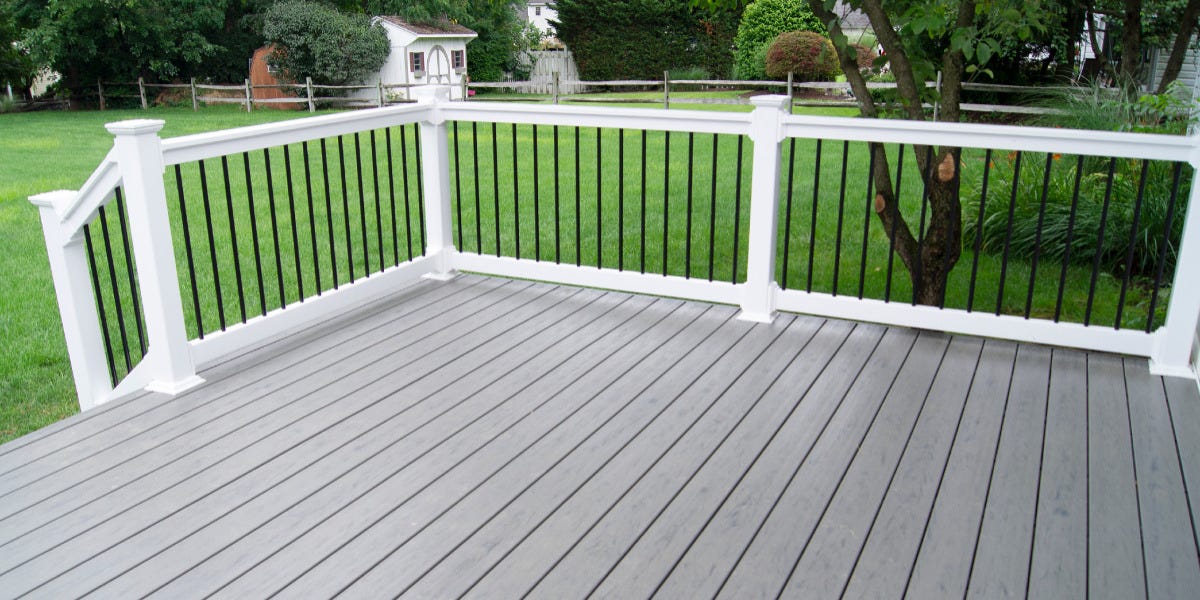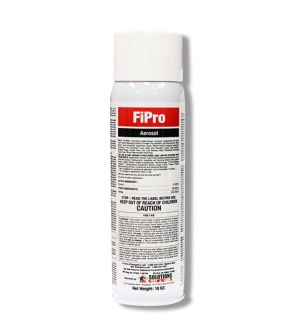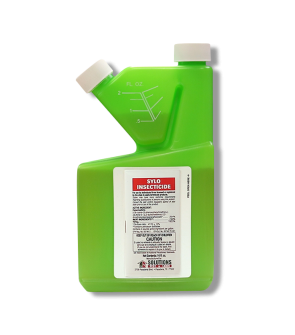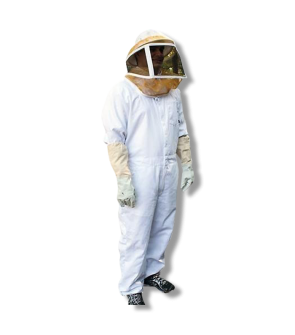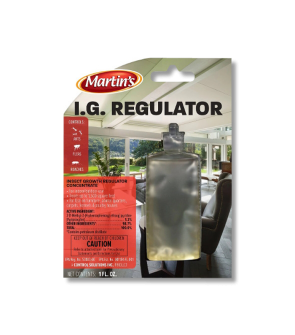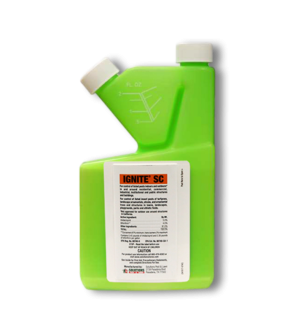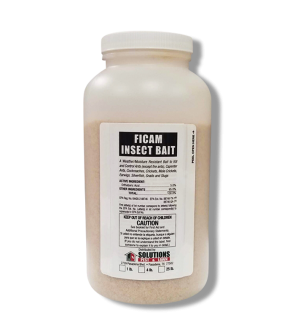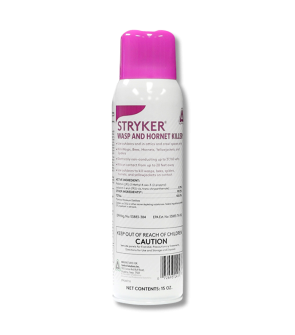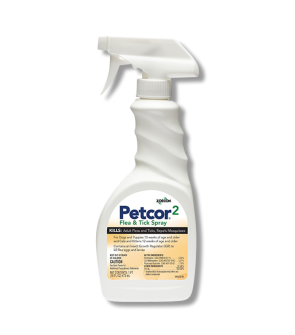Insects in Patio/Deck
Most Effective Products
Common Insects in Patios and Decks
From time to time pests will cover outdoor patios and decks around your home. Other than being a nuisance with their presence they can also come into your house. Certain pests such as ants, fleas, mosquitoes, termites, and wasps are common around patios and decks.
Even if you don’t mind the presence of these pests that much or go outside often, they can do a number of damages on your deck or patio. Despite potential structural danger these pests can also endanger the health of you, your family, or pets with their biting or stinging activities.
If you want to protect your property and family, you have to learn more about these pests and how to control them with this DIY guide. If you are not seeing a pest listed here then contact our customer service team by phone, email, or in-person at one of our store locations.
Ants
Ants on patios or decks can be attributed to several factors such as food, water, and favorable conditions for nests. When it comes to these pests, nothing is more common than carpenter ants and pavement ants on patios and decks.
Much like other ant species, these pests live in large colonies and establish trails to communicate with each other to navigate towards these sites. Additionally, these ants can bite, sting, or weaken the structure of wooden patios or decks.
Identification

For a visual image look at the picture above: On the left is the carpenter ant and on the right is the pavement ant.
Carpenter ants are large black-colored ants that also range in red, yellow, orange, or a combination of black and red. These pests vary in size from 0.25 to 0.75 inches long and have 3 body segments.
Pavement ants are black to brown colored and measure 1/8th of an inch long. Contains 12 segmented antennae with a 3 segmented club at the end.
Inspection

Carpenter ants prefer to make their nests in decaying, damp wood of your deck or porch. This could be the deck or patio support, railing, posts, or the underside of these sites.
Pavement ants sometimes create their nests under the flooring and woodwork of decks and patios on the ground. Typically, they like to nest in the cracks and crevices or along cement slabs, sidewalks, or driveways.
Treatment
Step 1: Use Ant Bait
 Getting rid of ants is easy enough with the help of granular ant baits. Gel baits can be used, but with outside temperatures they can become ineffective.
Getting rid of ants is easy enough with the help of granular ant baits. Gel baits can be used, but with outside temperatures they can become ineffective.
When using ant baits it's important to place them in the correct spots where these pests are most active. Still follow the instructions of the bait of your choice and keep food removed from the area you set your bait to increase its effectiveness.
Ficam Insect Bait is a weather and moisture resistant granular bait made to eliminate various crawling pests like ants.
Determine how much Ficam Insect Bait to use by measuring the square footage of the treatment area. To do this, measure the length and width of the treatment area in feet then multiply them together (length X width = square footage).
Apply 6 oz. of Ficam Insect Bait per 100 sq. ft. as a perimeter treatment around patios and decks.
To create a perimeter treatment with Ficam Insect Bait make a band that is 2 feet wide around patios, decks, driveways, sidewalks, and other areas where ants are present.
Reapply as necessary to control ants.
Step 2: Treat Voids
 In most cases, some ants species like carpenter ants can be found in the wooden elements of your deck or patio. To eliminate ants under or in the wooden parts of your deck and patio, we recommend FiPro Foaming Aerosol.
In most cases, some ants species like carpenter ants can be found in the wooden elements of your deck or patio. To eliminate ants under or in the wooden parts of your deck and patio, we recommend FiPro Foaming Aerosol.
FiPro Foaming Aerosol is a ready to use foaming insecticide containing the active ingredient fipronil, which works to eliminate pests in hard to reach places such as ants.
Shake the FiPro Foaming Aerosol well before use. Connect the applicator straw into the FiPro Foaming Aerosol nozzle then insert it into cracks, crevices, damaged wood, and junctions between wood and foundations and voids associated with buildings.
You may also treat exposed surfaces or along ant trails up to a 6” length. For all other sites, simply spray and hold the straw into these areas for 8 seconds.
Allow FiPro Foaming Aerosol to dissipate on treated sites or wipe away excess foam before leaving treated areas.
Do not apply this product to impervious surfaces.
If ant activity is still found, reapply this product 30 days after the previous application.
Step 3: Create Chemical Barriers
 To prevent ants from returning to the patio and deck, and kill those that do return use a residual insecticide. To create barriers around your deck and patio, use Supreme IT.
To prevent ants from returning to the patio and deck, and kill those that do return use a residual insecticide. To create barriers around your deck and patio, use Supreme IT.
Supreme IT is a broad-spectrum insecticide concentrate that controls over 70 types of pests, including ants. When dried, this product creates a 90 day residual barrier.
Use 1.0 fl. oz. of Supreme IT in 1 gallon of water per 1,000 sq. ft. of patios and decks. You will need to use a handheld pump sprayer to make applications with.
Create barriers around your deck or patio by spraying 3 feet up on the structure and 3 feet out on the ground next to it. Be sure to also spray around window and door frames, eaves, soffits, and other cracks and crevices on foundation structure.
Keep people and pets out of treated areas until the spray has completely dried.
Fleas
Many homeowners are surprised to learn how difficult it is to eliminate a small creature such as a flea. These pests have strong exoskeletons that make it hard to crush them and are reproduction machines capable of laying 50 eggs per day.
Inside of their eggs fleas are well-protected and resistant to most insecticides used making reinfestation very possible. You do not necessarily needs pets to have a flea infestation on your porch or deck. Wild animals that travel or take shelter under these sites expose you and your pets to fleas.
Identification
Fleas are small, flat bodied pests that measure 1/16th to 1/6th of an inch in size. These oval-shaped pests have no wings, 6 legs, and reddish-brown to black in color.
Inspection
Fleas can live under patios and decks or in cracks and crevices in these areas where it is shaded. They will also hide in the grass, shrubs, or overgrown foliage, around these sites.
Most of the time these pests live in the fur or hair of wildlife and pets. Pets that consistently lay outside on decks and patios can spread these pests to patios and decks.
Treatment
Step 1: Clean Outdoor Furniture
To remove as much fleas and their eggs as possible, begin with cleaning outdoor fabric/cloth furniture and mats.
We recommend using an vacuum that can be used outside or with a type of steaming device. By doing this you will generate heat that will stimulate pre-emerged adults to emerge from the pupae stage, shedding their skin and leaving them more susceptible to pesticide treatments.
Thoroughly vacuum the floor, any carpeting, couch cushions and pillows kept outside. Be sure to also vacuum other areas where your pet spends most of its time on your deck or patio.
Properly clean your vacuum or steamer after use to avoid bringing fleas indoors.
Step 2: Treat Pets
Next thing you will need to do is to treat your pets with an insecticide labeled to do so. All pets should be treated at the same time to avoid spreading the infestation from one animal to another.
Petcor 2 Flea & Tick Spray is a contact spray insecticide that kills fleas, ticks, and repel mosquitoes on dogs and cats. It will also stunt the pests ability to grow into reproductive adults with its built-in insect growth regulator.
First treat the animals face by spraying Petcor 2 Flea & Tick Spray onto a towel then wipe around the eyes, nose, and ears. Next, spray down the animal's coat to the neck, middle and hind quarters, and lastly the legs and tails.
As you spray your pets fur it would be best to ruffle the coat to better reach pests.
The recommended dose is about 4 squeezes of the trigger sprayer per pound of body weight. Short-haired pets will need less; more spray may be needed for long-haired pets. In all cases, apply spray until the coat is damp, not saturated.
This product can only be used on dogs older than 10 weeks of age and cats older than 12 weeks of age.
Step 3: Make a Premise Treatment

Apply 1.0 fl. oz. of Supreme IT in 1 gallon of water per 1,000 sq. ft. for both barrier applications and broadcast treatments.
To create a perimeter treatment around your home, deck, and patio spray 3 feet up these structure walls and 3 feet out from these sites on the ground next to it. Be sure to spray around window and door frames, eaves, and plumbing penetrations.
Broadcast treatments on lawns will be done by spraying the top and bottom of turf leaves until wet, but not to the point of runoff.
Mosquitoes
Nothing is less pleasant than sitting out on your deck or patio and being bitten by mosquitoes. Aside from their annoying hovering and itchy bites, mosquitoes can transmit harmful diseases.
Identification
Mosquitoes are gray to light brown colored pests that have narrow oval shaped bodies with long legs. They measure from a quarter of an inch to one-half of an inch and have a long proboscis used to pierce skin and ingest blood.
Inspection
Mosquitoes can live under patios or decks as long as there is standing water. They may also hide under tall grass, overgrown shrubbery, yard debris, potted plants, rain gutters, bird baths, and other areas that collect water near patios and decks.
Treatment
Step 1: Maintain Yard

One sure way to deter and control these pests is to prune up shrubs and trees with overgrown branches and leaves. Another hiding place favored by mosquitoes is tall grass in your lawn, which can be corrected with mowing.
Mowing when the turf reaches 3 inches in height is an excellent way to correct these conditions and avoid possible scalping of turf.
Step 2: Apply Insecticides

For an adulticide, we recommend Supreme IT. To address immature stages of mosquitoes, Martin's IGR Insecticide would be best.
Martin's IGR Insecticide is an insect growth regulator concentrate that prevents listed insects from growing into reproducing adults. It cannot be used on its own and will need to be mixed with another insecticide.
Apply 1 fl. oz. of Supreme IT and 0.67 fl. Oz. of Martin's IGR Insecticide per gallon of water per 1,000 sq. ft. of the perimeter of patios and decks. This same rate can also be used for ornamentals.
Start by spraying 3 feet up the patio and deck and 3 feet out on the ground next to it. Be sure to also treat the top and bottom of ornamental leaves to the point of wet, but not runoff to further deter mosquitoes away from your patio or deck.
Termites
Termites are known for causing devastating and costly damages to homes, but they also target parts of your deck or patio made out of wood. These sites are often prone to termite activity because they are more exposed to weather elements causing it to collect water and rot.
Identification
Since there are various termites that can infest your deck or patio we will focus on general characteristics that separate them from other insect species.
Termites have a straight abdomen and straight radio-wire like antennae. Species of termites that have wings will have them the same length whereas other insect species have varying wing lengths.
Worker species of termites also come in a white to off-white color or clear color.
Inspection
Termites are attracted to parts of your deck or patio that are rotten or collecting moisture in the wood. Signs of termites in decks or patios could be where it is sunken in or decomposing, which could suggest where they are.
Treatment
Step 1: Create Termiticide Barriers
One of the best ways to ensure you have a termite-free deck and patio is by spraying insecticides. We suggest using a residual insecticide that can be used as barrier treatment such as Supreme IT.
By digging a trench around your deck, patio, and home you can create a barrier that will keep termites from inflicting damage and spreading further into your property.
Begin by digging a 6 inch deep and 6 inch wide trench around the base of your home, patio, and deck. Mix 5 fl. oz. of Supreme IT with 4.9 gallons of water in 5-gallon bucket to have a 5 gallon emulsion.
Pour the mixture into the trench and immediately fill it back with dirt until it is turned into mud. Repeat the process for each 10-foot section of your structure until the entire perimeter of your home, deck, and patio is covered.
Wasps
Beginning in June to October, wasps begin to make their presence known on your patio or deck. When sitting outside or walking to and from your home you could encounter wasps swarming around you. Whether you're allergic to wasp stings or simply do not wish to encounter stinging it can be real problem.
Identification

Wasps are slim-bodied with a narrow waist and legs. Their body appears to be non-hairy and shiny.
Bees have a fatter body and thicker legs and depending on the species are more hairier and fuzzy than wasps.
Inspection
Wasps prefer to build their nests in sheltered areas of your patio or deck. This could be under or in the corner of porch ceilings, eaves, window and door frames, and where your house roof overhangs on these sites.
Treatment
Step 1: Clear Out Nests

Stryker Wasp and Hornet Killer is ready to use wasp killer aerosol spray that offers a quick knockdown of these pests on contact. Additionally, it can be used from a safe distance of 20 feet to treat wasp nests.
Simply shake the Stryker Wasp and Hornet Killer before use then point it in an upright position towards the wasp nest.
Stand from a safe distance of 6 to 15 feet from the wasp nest then spray directly at the nest entrance until it is thoroughly wet. Any wasps escaping or flying near the nest should also be sprayed.
The best time of day to spray wasp nests is in the evening or early morning, since this is when wasps are most likely to be in nests.
Step 2: Treat Perimeter
If you do not want wasps to return then we recommend treating the entire outside perimeter of your house, deck and patio with Sylo Insecticide.
Sylo Insecticide is a synthetic pyrethroid that provides fast elimination of various pests like wasps and creates a 90 day residual barrier to repel and kill pests.
This product will need to be applied with a handheld pump sprayer to deliver precise and accurate control.
Apply 0.5 fl. oz. of Sylo Insecticide per 1,000 sq. ft. of treatment area. Once your solution is mixed, spray the areas where you noted wasps have nested.
You will also need to treat along eaves, and any entry points like around doors and windows. Then, conduct a barrier treatment by spraying along your structures outer perimeter going 3 feet up the structure and 6 to 10 feet out.
When finished, keep people and pets away from treated areas until the product dries completely
Key Takeaways
Common Pests on Patios and Decks
- Common bugs that infest patios and decks are ants, fleas, mosquitoes, termites, and wasps.
What Keeps Bugs Away on Patio and Deck
- To keep pests away from your patio and deck, you will need to apply residual insecticides like Supreme IT or Sylo Insecticide depending on the pest you are trying to control.
What Keeps Bugs Away Outside at Night on Patio and Decks
- Turning off porch lights and other outdoor light fixtures at night on porches can help deter certain pests like termites. Other methods such as yard maintenance, sealing away outdoor trash cans, and residual insecticides work best.
